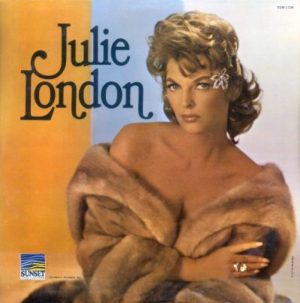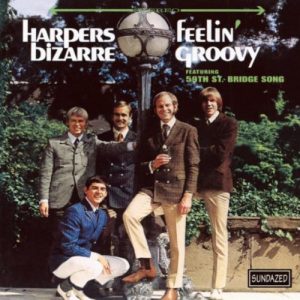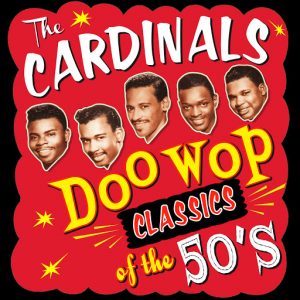Due to a “senior moment,” I missed the “thirties” in my running series of overlooked artists. As my fellow senior citizen, Editor Leebens, missed it, too, I’m relieved: it was a shared “senior moment.” What mustn’t be assumed is that these artists are in any way less significant than the others in the round-ups, while some of them, such as Johnny Rivers and Julie London, are so underappreciated that I often despair about a world in which Kanye West is deemed a “genius”. As ever, I hope at least one of these enriches your life, expands your horizons or – at the very least – sends you wandering down Memory Lane.
31.) Johnny Rivers

In any list of major American artists who couldn’t get arrested outside of their home market, Johnny Rivers looms large. This astounding performer, an early purveyor of “blue-eyed soul”, had the misfortune of arriving on the scene just before the British Invasion, but he still managed in his home market a dozen Top 30 US hits, a couple of dozen Hot 100 appearances and even a Number 5 LP. He segued from rock’n’roll and Motown covers to singer-songwriter/Left Coast troubadour with ease. Among his later, undiscovered gems are killer versions of “Help Me, Rhonda” and “Rockin’ Pneumonia and the Boogie-Woogie Flu” and the LPs Outside Help, L.A. Reggae and Borrowed Time. Buy anything with his name on it, from his live debut to the present releases, without fear of a dud moment. The man has style, soul and a genuine rock’n’roll heart on a par with Springsteen.
32.) Julie London

During an era when astounding singers of popular standards seemed to be falling out of the trees, Julie London might have been lost in the pack that included Ella, Dinah and Sarah at the pinnacle, plus Helen Humes, Eartha Kitt, Keely Smith, Doris Day, Patti Page, Peggy Lee, Nancy Wilson and far too many others to list. Thing is, London was so sultry, so salaciously smokin’ hot AND so astounding a stylist that the recipe was irresistible in the prudish Fifties. She was a guilty pleasure. Her sleeve art could have been X-rated. You may know her only for “Cry Me A River” or her move into acting on both the big and small screens, but – as with Doris Day – this second career overshadowed her sublime musical legacy. She was of the breathy, come-hither school of emoting, and it didn’t hurt that she looked the part. In these politically correct times and absurd gender wars, rife with unbridled irony and/or utter hypocrisy, a time when no-talents like Beyoncé or genuine talents (though she often does her best to undermine it) such as Lady Gaga can get away with less clothing than a stripper could in the 1950s – with not a peep from the feminist sisterhood – Julie London still out-sexys them all. And she could sing.
33.) Mike Bloomfield

Far too many A-list guitarists, including Eric Clapton, have praised Bloomfield’s abilities to on the record for you to wonder why he’s in this list of overlooked geniuses, but the sad fact is that everyone still worships at the altar of Stevie Ray, while Bloomfield is primarily known as a footnote in Bob Dylan biographies and discographies. Screw that. If you love the blues and are not one of those reverse-racism idiots who think that you have to have been born in the Delta or Chicago’s South Side, up yours: Bloomfield was born in Chicago. And while it may be been the North Side, he gravitated towards the blues clubs, honed his chops and proved to be one of the most incendiary guitarists the genre ever produced. I ask you to do only this: stream a mere two tracks off the first Paul Butterfield Blues Band, “Shake Your Money Maker” and “Look Over Yonder’s Wall.” And then tell yourself, “This sumbitch was only 22?” R.I.P, MB.
34.) Shadows of Knight

As one who values the Nuggets compilation the way linguists worship the Rosetta Stone, I admit to prejudice toward the Shadows of Knight. The highpoint of the short-lived band in which I sang as a teenager was our poor cover of their sublime cover of Them’s “Gloria” and I think the Shads’ version killed it even over the original. Usually grouped with a host of other semi-remembered kick-ass outfits who are filed under “Garage Bands”, or “punk” before the British stole the term and applied it to crap like the Sex Pistols, the Shadows of Knight had Chicago blues in their bloodstream, and a clear adoration of the early Rolling Stones, the Animals, the Yardbirds and the Pretty Things. Check out “Oh, Yeah,” “Boom, Boom” or any of their other blues covers, provided you don’t have that hang-up about cultural hijacking. These guys could rock and snarl with the best of ‘em.
35.) Kinky Friedman

Now far better known as a Texas politician and crime novelist, Kinky Friedman and his band, the Texas Jewboys, flipped the finger at just about everyone with his 1973 debut, Sold American: racists, homophobes, anti-Semites, mass murders. By performing as a nice (or not-so-nice) Jewish boy in the most goyishe genre of them all, he also pissed off a whole lot of Nashville rednecks. Musically, even if you don’t care for his brand of satire – Lenny Bruce meets Buck Owens – his albums are terrific fun, embracing the all the C&W subgenres from country rock to country swing and he was hip enough and cool enough to attract as his guest musicians the likes of T-Bone Burnett, Eric Clapton, Lowell George, Levon Helm, Mick Ronson, Ron Wood, Rick Danko, Dr. John, Richard Manuel, Ronnie Hawkins and another nice Jewish boy named Robert Zimmerman. Kosher Kountry, indeed, and still funny as hell.
36.) Harpers Bizarre

Skip this if you hate “Sunshine Pop”, that frozen-in-time genre from the circa 1969 that included Spanky and Our Gang, the Association, the Merry-Go-Round and other bands that emulated the harmonies of the Beach Boys and the Mamas & Papas, and then applied them to everything from Broadway tunes and the Great American Songbook to soft rock and the singer-songwriter canon. This group, with its roots in the Tikis and a drummer secured from the wondrous Beau Brummels, broke huge with a cover of Simon & Garfunkel’s “59th Street Bridge Song (Feelin’ Groovy)” and applied the same sugar to material from Randy Newman, Leon Russell, Van Dyke Parks and Doug Kershaw, intermingled with Cole Porter, Harold Arlen and Burt Bacharach. I am in no mood to adopt the defensive against those who think it’s twee and must have some heavy political or philosophical message in all they see, hear say or do: this stuff is gorgeous, immaculately produced and ever cheerful – essential at a time when the French have decided to elect a banker as president, Assad is still in office and Canada is run by a snowflake. [I’ll forward all the reader emails to you, Ken—Ed.] Pour a cherry cola and chill.
37.) Freddy Cannon

Is there a sub-genre for Gary U.S. Bonds, Mitch Ryder & the Detroit Wheels and all those other acts whose every recording sounds like it was recorded at a frat party? Cannon, who is known primarily for “Palisades Park”, had that knack, but has been written off as a typical American Bandstand habitué of the pre-Beatles era. [Brief aside: that period between the demise of the original golden age rockers – when Elvis joined the Army while Chuck, Little Richard and the others seemed to disappear, and the arrival of the Beatles – needs to be reassessed. Anyone who can’t hear the magic in Gene Pitney, Johnny Tillotson, Leslie Gore, Roy Orbison et al needs to lighten up a bit.] Along with “Tallahassee Lassie,” “Way Down Yonder In New Orleans” and others in a similar vein, the material he produced was uplifting in a “I’m-In-Touch-With-My-Inner-16-Year-Old” way. If you’re of a certain age, and spent your afternoons glued to the TV set, you will choke with nostalgia when you hear Cannon’s theme for Dick Clark’s TV show, Where the Action Is, which happens to feature no less than Leon Russell, James Burton, Glen Campbell, and David Gates. Lo-fi joy, probably best on a beaten-to-hell transistor radio, but an absolute hoot over a high-end system. 38.) Tiny Tim 
I know: like a chat room commentator who recently accused me of not being serious about music, this will provide cause to have you scratching your heads. Admittedly, I only recently rediscovered TT because I am addicted to ukulele – further proof that I and my hero ukulele devotee George Harrison cannot possibly be serious about music – but I was staggered to hear beyond “Tiptoe Through the Tulips” that he was actually a sincere and clever interpreter of the Great American Songbook, a masterful plucker of the four strings and the beneficiary of some sublime studio craftsmanship. This may be testing your eclecticism too far, but for those who are game for anything, you might be pleasantly surprised. Which reminds me of one undeniable benefit of streaming: if you’re with Amazon Prime or other streaming service with a vast catalogue, you can try just about any of my recommendations without having to buy a CD or LP which you might later regret. So go on, you have nothing to lose. 39.) Manfred Mann 
Choose whatever incarnation you like: the eponymous jazzer or one of his assorted Earth Band line-ups, but for me it’s the group that gave us astounding chart hits including “Do Wah Diddy Diddy”, “Sha-La-La” and the exquisite “Pretty Flamingo.” They offered a unique sound in a peerlessly fecund period of fresh approaches to pop and rock – the British Invasion of 1964-1966 – but (like the Zombies) Manfred Mann had a musical depth beyond the obvious blues or R&B backgrounds that powered most of their fellow travellers. True, for this group, R&B, blues and jazz were also key elements, and to this day, singer Paul Jones presents a weekly blues radio program on BBC’s Radio Four, but the band was also an early interpreter of Bob Dylan songs, recording “If You Gotta Go, Go Now,” “With God On Our Side” and even having a hit with “Mighty Quinn”. Additionally, they covered Burt Bacharach’s “My Little Red Book” before Love and dug into the Great American Songbook years before other rock musicians did. Remember that whenever anyone credits Ringo Starr, Nilsson, Rod Stewart or Bryan Ferry for adapting the likes of Cole Porter to the rock milieu.
40.) The Cardinals

Fewer than 40 songs are believed to exist from this most sublime of doo-wop outfits, and less than 30 were released. You may have seen their name among other “bird” groups, whom only the experts can keep straight: Orioles vs Penguins vs Flamingos. You may argue convincingly that doo-wop is even less varied a genre than the blues, which is a natural reaction from those who have not made the leap and cannot hear the difference between Howlin’ Wolf and Elmore James. But this outfit featured what for some might be the most exquisite voices outside of Billy Ward & the Dominoes’ line-ups with either Clyde McPhatter or Jackie Wilson. If the Cardinals only ever recorded “The Door Is Still Open To My Heart,” written by the phenomenal Chuck Willis, and later a huge hit for Dean Martin when he transposed it to a grandiose, if a tad schmaltzy belter with a C&W tang, this is still a must-hear. The sax solo in the Cardinals’ version is utterly transcendent. Stream it – please. You will thank me. The good news is that a brand-new compilation, Their Complete Recordings, has just appeared on amazon.com from Southern Routes. Buy it if you want to hear what the angels really do sound like.











0 comments